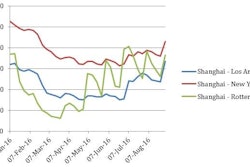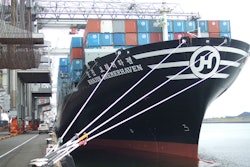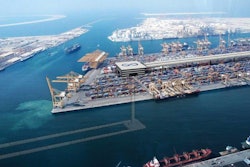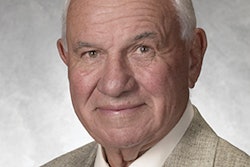Dallas, Texas—Feb. 4, 2014—Transplace, a provider of transportation management services and logistics technology, announced the results of its annual benchmarking study conducted to gain insight into the changes and trends in transportation accessorial charges. The study, which included data from more than 150 shippers and more than $12 billion in annual freight spend, identified the customary types of charges and rates implemented by shippers beyond the basic line-haul fees to help organizations better understand how their accessorials compare to market competitive standards.
“Market-driven benchmarks equip transportation professionals with the knowledge they need to best understand their cost position relative to the freight marketplace and position themselves to better optimize their procurement efforts,” said Ben Cubitt, senior vice president of consulting and engineering for Transplace.
Observations from the accessorial benchmark study include:
- Fuel surcharge schedules. The study revealed that fuel surcharge (FSC) is the most common accessorial published by shippers (93 percent of companies in the study), with the vast majority utilizing a cents-per-mile-based schedule vs. a percentage-based fuel method. For those companies using the cents-per-mile schedule, most still peg their FSC starting point around the traditional $1.17 to $1.24 range. The vast majority (73 percent in total) were almost evenly split between $0.05 and $0.06 increments beyond the starting peg. The trend is towards $0.06 brackets, a recognition of both the increasing burden of fuel in overall transportation costs and the significant increase in average miles per gallon for truckload carrier’s fleets over the past few years.
Intermodal fuel surcharges were also included in the study, identifying that the surcharges between the truckload and intermodal can vary as much as $0.33 and as little as $0.12. Added Cubitt, “A minority of shippers are using the same surcharge programs for intermodal as for truckload, when an optimized intermodal FSC is generally half that of the truckload FSC. This indicates that they still have not built into their FSC schedules the full economic efficiencies of intermodal vs. truckload moves.”
- Detention with power. Under the current hours of service environment, time equals money for carriers. Consequently, detention is an important accessorial to manage. Not only is this accessorial important for carriers to manage, but also shippers, who need to examine their detention policies to ensure they are not requiring nonstandard load/unload times for carriers, which could result in penalties and overall access to carrier capacity. The study revealed:
- 81 percent of companies are keeping to the accepted industry standard by allowing two hours free detention, with only 5 percent of companies allowing less than two hours.
- Most companies (66 percent) pay in increments of 15 minutes, with an additional 26 percent of companies paying by the hour. This is up slightly from the 2011 study, which reported 60 percent of companies paying in 15-minute increments and 30 percent paying by the hour.
- Detention charges have remained stagnant over the last two years, ranging from $25 to $90 per hour, with most shippers allowing $60 per hour.
- Stop-off charges. For truckload service, stop-off charges were compared for stops one to four on a given load. Fifty-six percent of shippers claimed an increasing charge per stop scale, while the 43 percent balance held a flat charge per stop—charging various levels between $50 and $100. The most common stop-off charge is $100 for the first stop, $150 for the second stop and $250 for every stop thereafter. This reveals shippers are migrating away from low, flat stop-off charges, which do not accurately reflect the carrier’s cost per stop.
- Truck order not used. For shippers that do not use a truck to which they tendered a load, “truck order not used” charges typically apply. The study showed that of the 64 percent of shippers who apply these charges, 43 percent utilize a $250 charge, with $150 being the second most common level at 39 percent.
Other accessorials benchmarked in the study include: insurance, loading and unloading, re-consignment, detention without power, layover, hazardous materials, out-of-route miles, customs, expedited service, undelivered, redeliver, lumber maximum, pallet jack, weighing, proof of delivery and congestion.
Added Cubitt, “A global consumer packaged goods shipper used the accessorial benchmarking data to evaluate and optimize its fuel surcharge program, realizing over $3 million in annual transportation cost savings. The study allowed them to benchmark their program against the emerging industry standard and lead to a fast-paced initiative to close this gap. The benchmarking data also allowed them to make changes in their program with confidence that the changes were aligned with standard industry practices, and would not alienate or take advantage of their core carrier partners.”
The accessorial benchmark study compiled accessorial charge data from a diverse set of companies representing industries such as consumer packaged goods (CPG), retail, manufacturing, paper/packaging, technology, building products, food and other sectors.

















